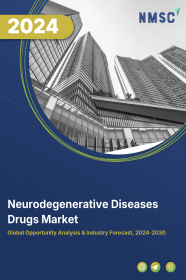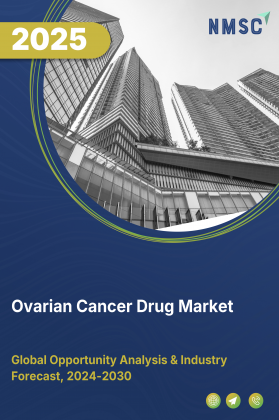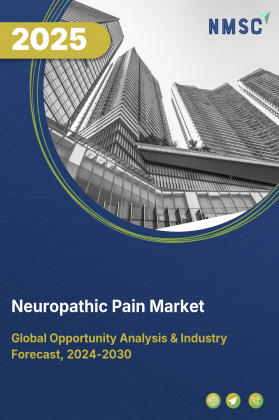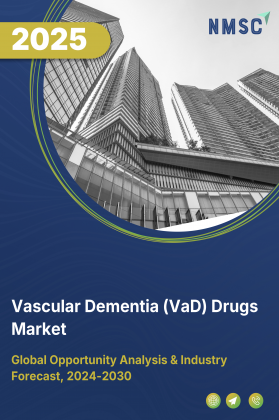
Neurodegenerative Diseases Drugs Market by Drug Class (Immunomodulators, Interferons, Decarboxylase Inhibitors, Dopamine Agonists, and Others), by Disease Indication (Multiple Sclerosis, Parkinson’s Disease, Alzheimer's Disease, Spinal Muscular Atrophy (SMA), and Others), by Route of Administration (Oral, Injection, Transdermal, and Others), by Distribution Channel (Hospitals, Online Pharmacies, and Retail Pharmacies) – Global Opportunity Analysis and Industry Forecast, 2024–2030
Neurodegenerative Diseases Drugs Market Report - Comprehensive Overview | |
| Study Period | 2020 - 2030 |
| Base Year for Estimation | 2024 |
| Forecast Data Period | 2026 - 2030 |
| Market Size in Base Year | 56.36 |
| Market Size in Forecast Year | 77.76 |
| Growth Rate 2026 - 2030 | 6.65% |
| Growth Factors | |
| Report Coverage | The report provides insights on market size, forecasts, emerging trends, competitive landscape, key segments, growth opportunities, recent developments, and strategic recommendations to help stakeholders make informed business decisions. |
| Segments Covered | Neurodegenerative Diseases Drugs Market by Drug Class (Immunomodulators, Interferons, Decarboxylase Inhibitors, Dopamine Agonists, and Others), by Disease Indication (Multiple Sclerosis, Parkinson’s Disease, Alzheimer's Disease, Spinal Muscular Atrophy (SMA), and Others), by Route of Administration (Oral, Injection, Transdermal, and Others), by Distribution Channel (Hospitals, Online Pharmacies, and Retail Pharmacies) |
| Countries Covered | 28 |
| Geographical Analysis | North America (The U.S., Canada, Mexico); Europe (The UK, Germany, France, Italy, Spain, Denmark, Netherlands, Finland, Sweden, Norway, Russia, Rest of Europe); Asia-Pacific (China, Japan, India, South Korea, Australia, Indonesia, Singapore, Taiwan, Thailand, Rest of Asia-Pacific) and RoW (Latin America, Middle East, Africa) |
| Companies Profiled | Top 10 companies |
| Competitive Landscape | |
| Market Share | Available for top 10 companies |
| Customization Scope | Free customization (equivalent to up to 80 working hours of analysts) after purchase. Addition or alteration to country, regional, and segment scope. |
| Purchase Option | Avail customized purchase options to meet your exact research needs. |
Market Definition
The global Neurodegenerative Diseases Drugs Market size, valued at USD 47.80 billion in 2023, is predicted to reach USD 77.76 billion by 2030, with a CAGR of 7.2% from 2024 to 2030. The neurodegenerative diseases drugs market pertains to the segment within the pharmaceutical and healthcare industry that focuses on the production, distribution, and consumption of pharmaceuticals and therapeutic agents. They are specifically developed for diagnosing, treating, or managing neurodegenerative diseases. This market encompasses a broad range of disorders characterized by the gradual degeneration and dysfunction of neurons in the central nervous system, including conditions such as Alzheimer's disease, Parkinson's disease, amyotrophic lateral sclerosis (ALS), and Huntington's disease.
Additionally, neurodegenerative diseases drugs include regulatory approvals, healthcare policies, and the evolving landscape of patient care for those affected by these debilitating conditions. The neurodegenerative diseases drugs play a pivotal role in improving the quality of life and providing hope to individuals and families affected by these challenging diseases.
Market Dynamics and Trends
The major driving factor of the growth of the neurodegenerative diseases drugs market is the increasing prevalence of neurodegenerative disorders, such as dementia, spinal muscular atrophy, and Friedreich ataxia around the globe. As per the World Health Organization's data, as of September 2022, approximately 55 million individuals are living with dementia. It is projected to increase to 78 million by 2030 and 139 million by 2050. This disease is common in adults less than 65 years of age. It can be prevented by being physically active, reducing smoking, avoiding alcohol, controlling weight with a nutritious diet, and maintaining blood pressure at a healthy level.
Also, the aging population is leading to an increase in the frequency of neurodegenerative diseases, such as Parkinson’s disease (PD), Alzheimer’s disease (AD), multiple sclerosis, and Huntington’s disease. This is due to the loss of regulation of immune responses in the brain. This results in the demand for neurodegenerative drugs, which is expected to drive the growth of the neurodegenerative disease drugs market.
Moreover, the market is driven by the rise in cases of Alzheimer's disease caused by hypertension in mid-life, orthostatic hypotension, diabetes, and head trauma. Globally, it is expected to drive the growth of the neurodegenerative diseases drugs market. According to the World Health Organization (WHO), in September 2022, more than 50 million people had dementia, a frequent type of Alzheimer's disorder. Also, nearly 10 million cases are diagnosed yearly.
The absence of government and hospital reimbursement policies for the management of neurodegenerative conditions such as Alzheimer's disease, Parkinson's disease, and Amyotrophic Lateral Sclerosis (ALS) is restraining the growth of the market. On the other hand, the introduction of GSH (γ-l-glutamyl-l-cysteinyl-glycine) Delivery Systems, a paper substance used for testing the GSH level of patients suffering from PD and AD, is expected to create ample opportunities for the neurodegenerative diseases drugs market in the coming years.
Market Segmentations and Scope of the Study
The neurodegenerative diseases drug market share is segmented on the basis of drug class, disease indication, route of administration, distribution channel, and geography. Based on drug class, the market is divided into immunomodulators, interferons, decarboxylase inhibitors, dopamine agonists, and others.
Based on disease indication, the market is classified into multiple sclerosis, Parkinson’s disease, Alzheimer's disease, spinal muscular atrophy (SMA), and others. On the basis of route administration, the market is categorized into oral, injection, transdermal, and others.
Based on distribution channel, the market is segmented into hospitals, online pharmacies, and retail pharmacies. The geographic breakdown and analysis of each of the aforesaid segments include regions, such as North America, Europe, Asia-Pacific, and the rest of the world (RoW).
Geographical Analysis
The North American region holds the lion's share in the neurodegenerative disease drugs market trends, and is expected to continue to dominate the market during the forecast period. This is attributed to the growing investments in neurodegenerative disease drugs by organizations, such as The National Institute of Health and The Harvard NeuroDiscovery Center for Neurodegenerative Diseases. For instance, in 2020, the National Institute of Health (NIH) increased its funding for neurodegenerative diseases, including Alzheimer's and Parkinson's, from USD 4,021 million to USD 4,110 million in 2021.
Also, the increasing investment in research & development activities for treating neurodegenerative diseases through various companies and government organizations is expected to drive the market growth in the region. For instance, in February 2022, Neurocentria, Inc. received the Food and Drug Administration (FDA) approval to conduct a clinical trial aimed at assessing the safety and effectiveness of the drug NRCT-101SR in adults with attention-deficit/hyperactivity disorder (ADHD). The trials helped younger and older adult populations by improving cognition and overall mood status, including reducing depression and anxiety symptoms.
On the other hand, Asia-Pacific is witnessing steady growth in the neurodegenerative diseases drugs market, owing to the rise in the number of patients, especially the aging population suffering from dementia, AD, and PD in the region. Based on a Nationwide Cross-Sectional study conducted in 2020, it was determined that the occurrence of dementia in individuals aged 60 and older in China was approximately 6.0%, with the prevalence of Alzheimer's disease (AD) and vascular dementia estimated at 3.9% and 1.6%, respectively.
Also, the emergence of various market players, such as Luye Pharma, for the treatment of AD is expected to boost the neurodegenerative disease drugs market in the region. For instance, in February 2021, Luye Pharma and Towa Pharmaceutical announced a strategic agreement to develop and market Rivastigmine Multi-Day Transdermal Patch, which treats Alzheimer's diseases, in Japan.
Additionally, the market is growing due to the common presence of Spinal Muscular Atrophy (SMA) caused by mutations in the survival motor neuron. These mutations lead to insufficient SMN protein expression, thus leading to the demand for neurodegenerative drugs and contributing to the growth of the market. In January 2020, The National Library of Medicines, stated that the overall carrier rate of SMA accounted for 2.0% in a heterogeneous set of studies.
Competitive Landscape
Various market players operating in the neurodegenerative diseases drugs industry include Novartis AG, Sanofi S.A., Orion Pharma, Ltd., F. Hoffman-La Roche Ltd., Teva Pharmaceuticals Industries, Inc., ACADIA Pharmaceuticals, Inc., Merck & Co., Inc., Pfizer, Inc., H. Lundbeck A/S, and Biogen, Inc. These market players continue to adopt various market development strategies, including product approval and collaborations with other market players, to maintain their dominance in the neurodegenerative diseases drugs market.
For instance, in February 2022, Aquinnah Pharmaceuticals announced a collaboration with Roche to advance new therapies for Amyotrophic Lateral Sclerosis (ALS) and other neurodegenerative diseases. The partnership helped reduce the TDP-43 pathology, the hallmark characteristic in more than 95% of ALS patients.
Also, in December 2021, Novartis announced that the U.S. Food and Drug Administration (FDA) approved Fast Track designation for branaplam (LMI070) for the treatment of Huntington’s disease (HD). HD is a multi-faceted neurodegenerative disease causing a progressive decline in behavioral, cognitive, and motor functioning.
Moreover, in October 2021, Teva Pharmaceutical Industries Ltd. collaborated with MODAG GmbH for the development and worldwide licensing of neurogenerative drugs, including MODAG's lead compound, anle138b, and a related compound, sery433.
Key Benefits
-
The neurodegenerative diseases drugs market report provides a quantitative analysis of the current market and estimations from 2023 to 2030. This analysis assists in identifying the prevailing market opportunities to capitalize on.
-
The study comprises a detailed analysis of the current and future neurodegenerative diseases drugs market trends for depicting the prevalent investment pockets in the industry.
-
The information related to key drivers, restraints, and opportunities and their impact on the neurodegenerative diseases drugs market is provided in the report.
-
The competitive analysis of the key players along with their market share in the neurodegenerative diseases drugs industry, is mentioned.
-
The SWOT analysis and a Porter’s Five Forces model is elaborated on in the study.
-
The value chain analysis in the market study provides a clear picture of the stakeholders’ roles.
Neurodegenerative Diseases Drugs Market Key Segments
By Drug Class
-
Immunomodulators
-
Interferons
-
Decarboxylase inhibitors
-
Dopamine agonists
-
Others
By Disease Indication
-
Multiple Sclerosis
-
Parkinson’s Disease
-
Alzheimer's Disease
-
Spinal Muscular Atrophy (SMA)
-
Others
By Route of Administration
-
Oral
-
Injection
-
Transdermal
-
Others
By Distribution Channel
-
Hospitals
-
Online Pharmacies
-
Retail pharmacies
By Region
-
North America
-
The U.S
-
Canada
-
Mexico
-
-
Europe
-
The U.K.
-
Germany
-
France
-
Spain
-
Italy
-
Netherlands
-
Denmark
-
Finland
-
Norway
-
Sweden
-
Russia
-
Rest of Europe
-
-
Asia-Pacific
-
China
-
Japan
-
India
-
Australia
-
South Korea
-
Thailand
-
Singapore
-
Rest of Asia-Pacific
-
-
Rest of the World (RoW)
-
Latin America
-
Middle East
-
Africa
-
Key Players
-
Novartis AG
-
Sanofi S.A
-
Orion Pharma, Ltd.
-
F. Hoffman-La Roche, Ltd.
-
Teva Pharmaceuticals Industries, Inc.
-
ACADIA Pharmaceuticals, Inc.
-
Merck & Co., Inc.
-
Pfizer, Inc.
-
H. Lundbeck A/S
-
Biogen, Inc.
REPORT SCOPE AND SEGMENTATION:
|
Parameters |
Details |
|
Market Size in 2023 |
USD 47.80 Billion |
|
Revenue Forecast in 2030 |
USD 77.76 Billion |
|
Revenue Growth Rate |
CAGR of 7.2% from 2024 to 2030 |
|
Analysis Period |
2023–2030 |
|
Base Year Considered |
2023 |
|
Forecast Period |
2024–2030 |
|
Market Size Estimation |
Billion (USD) |
|
Growth Factors |
The rising prevalence of neurodegenerative disorders, such as dementia, spinal muscular atrophy, and others The growing frequency of Alzheimer's diseases Increasing geriatric population around the globe |
|
Countries Covered |
28 |
|
Companies Profiled |
10 |
|
Market Share |
Available for 10 companies |
|
Customization Scope |
Free customization (equivalent up to 80 working hours of analysts) after purchase. Addition or alteration to country, regional, and segment scope. |
|
Pricing and Purchase Options |
Avail customized purchase options to meet your exact research needs. |




















 Speak to Our Analyst
Speak to Our Analyst

























